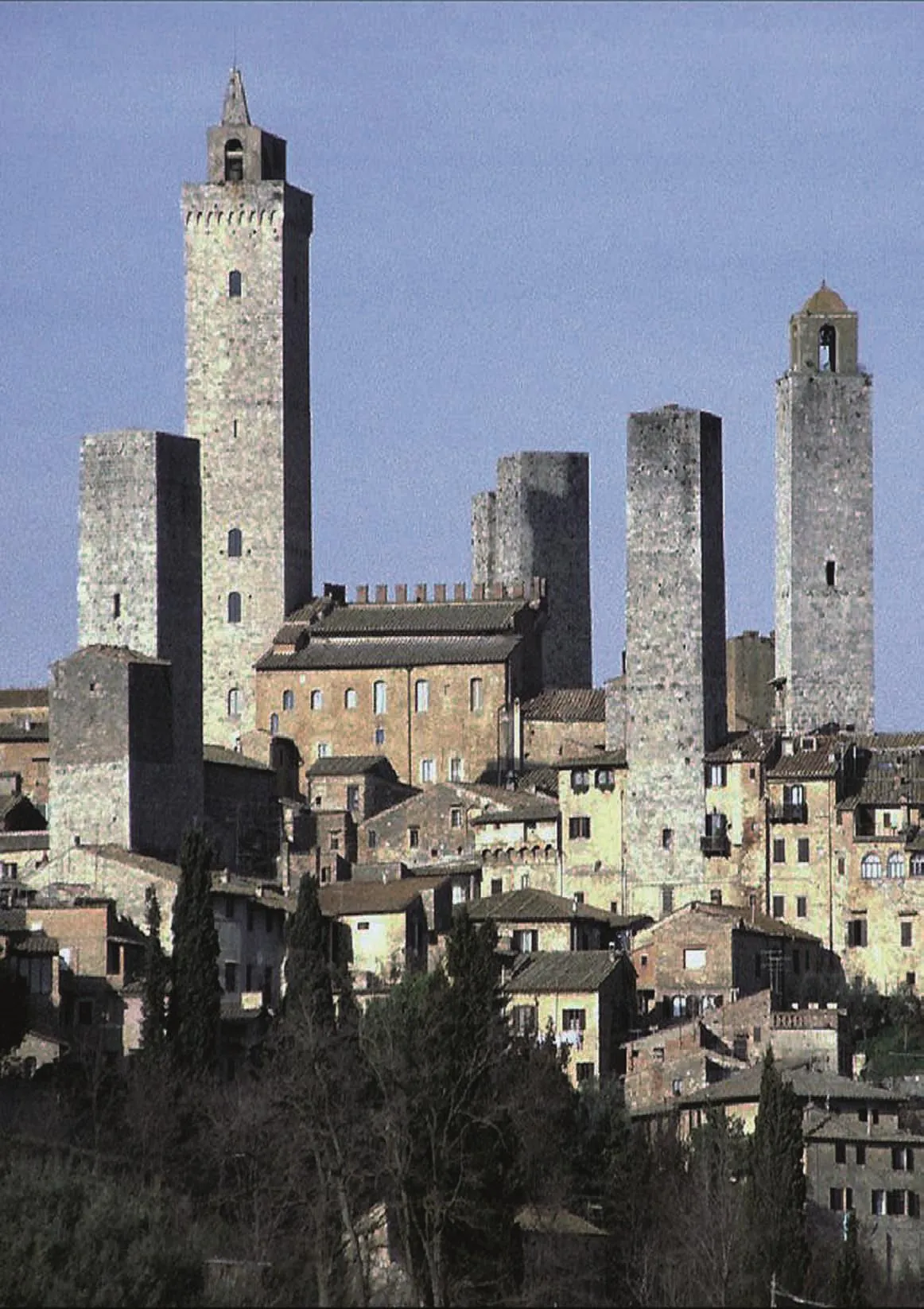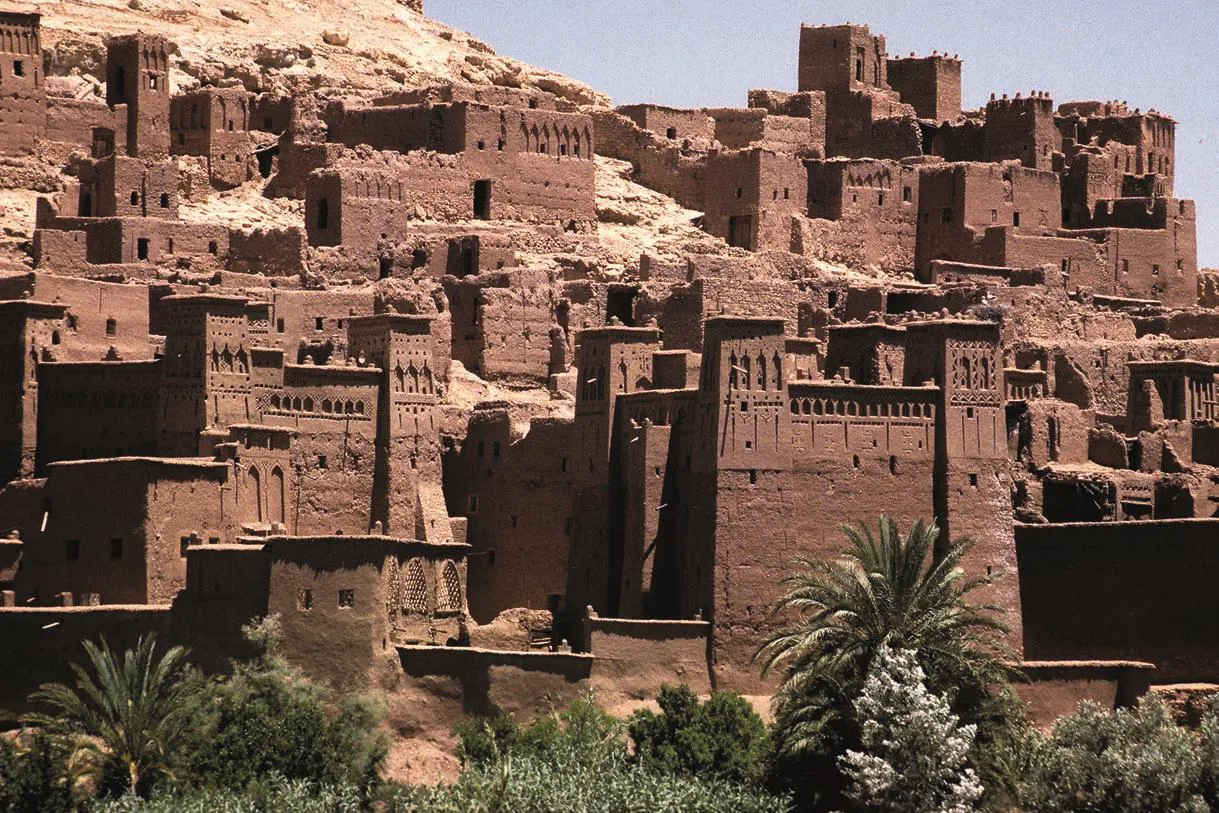遗产图说


西班牙城市阿维拉保存着欧洲最大的完整的中世纪城墙。城墙建于12世纪原先的阿拉伯人定居地废弃之后。如今,老城完全由25.7 km(16 mi)的城墙包围。这座防卫性质的城墙共有六座城门。城墙上88座半圆形塔楼使得这座城市成为了世界上最好的防卫性建筑案例之一。它的中世纪街道两旁有许多哥特式和罗马风教堂,因此阿维拉也被称作“石头与圣人之城”。
The Spanish city Ávila is the largest in Europe to have conserved its medieval town walls completely intact. The walls were constructed in the 12th century after the original settlement was abandoned by the Arabs. Today, 16 miles of walls totally ring the old city. Built for defence, the walls may be entered through six gates. 88 semi-circular towers render this city one of the fi nest examples of defensive architecture in the world.Its medieval streets are lined with an abundance of Gothic and Romanesque churches leading it to be called the ‘Town of Stones and Saints’.


中国的长城由一系列沿着历史上北侧边界建造的东西向横跨中国的防御性工事组成。据估算,明代长城总长约8 851.4 km(5 500 mi),加上其它时期的城段,长度总计达20 921.5 km(13 000 mi)。最早的长城建于公元前7世纪,其后的岁月里又慢慢建起新的城段。公元前3世纪,秦始皇将当时已有的城段连接起来,以组成抵御欧亚草原各游牧部落侵扰的更为强大的屏障。
The Great Wall of China is a series of forti fi cations built across the historical northern borders and along an east to west line crossing China.An estimate of the Ming Dynasty (1368–1644) lengths is around 5 500 miles, although when lengths of others pieces of the wall total as much as 13 000 miles. The fi rst walls were built as early as the 7th century BC and new walls were erected over the centuries. In the 3rd century BC,these walls were fi nally linked by Qin Shi Huang (This First Emperor of Qin) to create a stronger barrier against various nomadic groups of the Eurasia steppe.

甘肃省的嘉峪关关城和悬臂长城,由于位于中国明代西部边界处长城的尾端而被称为“河西咽口”。它是建于黑山东坡上的一个重要的防御体系,自西向东看时不会被发现。入侵者以为他们只要绕过嘉峪关,通过黑山峡谷就能进入中国,但这道意料之外的城墙成为了入侵者路线上坚固的障碍。1987年的修复城段用当地的砂砾和一层层夯实的黄土构成,仅仅只有1.6 km(1 mi)长。从400级台阶登上顶端,便会看到周围沙漠的广袤与荒凉,可想而知,在这西部岗哨,生活曾经多么艰苦而顽强。
Jiayuguan Fort and Overhanging Great Wall in Gansu Province is known as ‘the mouth of China’ because of its position at the end of the Great Wall of the western boundary of Ming Dynasty China. It is an important defence network built on the eastern slope of Black Mountain and is not visible to anyone looking from west to east. Aggressors thought they could enter China from Black Mountain Canyon as long as they rounded the Jiayu Pass, but this impressive wall became a fi rm obstacle to the path of invaders. Built from local gravel and layer upon layer of rammed yellow earth, this 1987 restoration is only a mile long. From atop the 400 steps to the summit, one can observe the vastness and desolation of the desert landscape and understand how tenacious life must have been at this western post.

圣吉米利亚诺是意大利一座中世纪山城,其历史可以追溯到罗马时期。这是一座城墙围护下充满矛盾的城市。两圈沉重的石头城墙旨在保卫城中居民免受外来入侵者的伤害。然而,城内贵族们原本用来展示经济地位的塔楼最终却变成了相互对立的家族发生流血冲突时的避难所与安全区。尽管文艺复兴时期的画作通常描绘发生在欧洲城市城墙之外的大型战争场面,圣吉米利亚诺却有大量表现战争场面的绘画,描绘了弓箭手从一个家族的塔楼窗口向附近另一座塔楼的窗洞射箭的情形。
San Gimigliano is a medieval Italian hill town that dates from Roman times. It is a walled city fi lled with contradictions. Its two layers of heavystone city walls were a defensive concept intended to protect the townspeople from outside intruders. Yet the towers of the nobility located within the walls, built initially to display economic prowess, eventually became havens of retreat, safe zones for families feuding with rival families within the city walls. While Rennaisance paintings depicting the great battle scenes outside the walled cities of Europe are common, numerous such battle scenes inside the walls of San Gimigliano illustrate archers shooting from the high windows of one family tower to that of a neighbouring tower.


这座城市美丽的轮廓确实已令人印象深刻,不过观看它历史上遗留下来的画作也足以了解其实际环境的优雅。如今,圣吉米利亚诺还保留着十三座塔楼,而在十四世纪时曾经有七十二座。圣吉米利亚诺城墙之内还有三处尺度宜人的广场:第一座是为教堂和宗教功能而建;第二座在公共市民建筑和政府大楼前;第三座也是最大的一座,有一处公共喷泉,一个容纳集市和用于庆祝集会的会场,歌颂着普通市民的生活。这些开放空间与狭窄街景上高耸的塔楼结合,共同赋予这座城市独特的建筑体验。
While the silhouette of this handsome walled city is indeed impressive, one need only review the paintings of centuries past to understand the true elegance of this lovely setting. Today, 13 of San Gimignano’s towers remain. In the 14th century, that number was 72! Also contained within San Gimignano’s city walls are three delightfully scaled piazzas, one planned for church and religious functions, the second fronting formal civil and government monuments, and the third and largest, a public piazza featuring a public water fountain, a forum for markets, fairs and gatherings to celebrate life. These open spaces join with narrow street vistas featuring soaring towers to make this city a special architectural experience.

印加文明的萨克塞瓦曼堡是世界历史上巨石建筑中最为壮丽的一座。在15世纪的印加王帕查库蒂统治下建起的这些精确拼接的石墙,正好位于印加首都,如今的秘鲁城市库斯科高处。在既不使用推拉器械也没有轮子的情况下,印加手工艺者建出了有着三层共约500 m(1 600 ft)高的“之”字形围墙的宏伟城堡,墙体全部由平均高3 m—4 m(10 ft—12 ft),重逾百吨的多边形花岗岩石构成。上层的一块巨石甚至高过5 m(15 ft),重达360 t。印加的石匠仅仅使用石质和铜质工具就精确切割出这些石块,使它们之间的缝隙甚至无法塞进一张纸。
The Inca fortress of Sacsayhuaman is arguably the most magni fi cent architectural accomplishment of colossal stone masonry in the history of the world. Its precisely crafted stone walls were constructed in the 15th century during the reign of Emperor Pachacuti, just above the Inca capital of Cusco, Peru. Without the use of draft animals or the existence of the wheel, Inca craftsman fashioned the massive fortress, three levels of zigzag walls some 1 600 feet in length, of polygonal-shaped granite stones averaging 10–12 feet in height and over 100 tons in weight. One great stone at the upper level is over 15 feet in height and weighs 360 tons! Using only stone and bronze tools, the stonemasons shaped the granitestones so accurately that not even a sheet of paper can fi t between the stones.


在印加统治下,印加的能工巧匠与2万多名其它战争中俘获的工匠一起工作。时间已经证明了印加建筑师设计三层分明的退台建筑的效能。五个多世纪以来,这一伟大工程经历多次大地震仍旧屹立如初,而这些自然灾害曾多次摧毁库斯科城,并且使西班牙人建造的殖民地教堂与公共建筑倾倒。如今,印加文明的盖丘亚印第安人后裔每年都聚集于堡墙之上,在冬至日这一天举行太阳节,以迎接他们的农业文化中白昼长于黑夜的又一次轮回。
Under Inca reign, the skilled Inca labourers were joined by workforce of 20 000 others conquered in battle. Time has proven the effciency of the Inca architects who designed the three distinct terraces which recede backwards on each other. The result of this engineering feat is astructure that has withstood major earthquakes for over fi ve centuries, natural disasters which have regularly devastated the city of Cusco and toppled colonial churches and public buildings built by the Spanish. Today, as in historical times, Quechua Indian descendants of the Incas gather annually on the walls to celebrate Inti Raymi, the winter solstice feast that welcomes the return of longer days of sun into their agrarian culture.

阿伊特本哈杜是一座位于摩洛哥阿特拉斯高地的柏柏尔人村庄。村庄围墙环绕, 内有夯土和泥砖建造的城堡、村落及土坯房。尽管现在只有少数居民定居于此,但历史上村子曾经是联系撒哈拉沙漠与马拉喀什的一处重要的大篷车驿站。大篷车还运送南方来的贸易品,其中包括盐、金子甚至奴隶。在通过阿特拉斯山脉的众多商路中,这条路线利润最多。时至今日,骆驼和商人仍在瓦尔扎扎特河沿岸城市的郊外逗留。
Ait Benhaddou is a Berber village located in the High Atlas of Morocco. This walled settlement consists of kasbahs, ksars and earth houses,all of rammed earth and mud brick wall construction. Although it is the permanent home of only a few residents today, it once served as a major caravan stop linking the Sahara Desert to Marrakesh. These caravans brought trade from the south that included salt, gold and even slaves. This was a most lucrative trade route through the Atlas Mountains. Even today, camels and traders linger outside the city along the Ouarzazate River.


村落高高地坐落在夯土墙基之上,几何形状的设计与隐拱的使用证明着这座美丽山村建筑上的光辉。在阿伊特本哈杜村的大门外,河岸边的芦苇丛和棕榈果树与鹅卵石铺就的狭窄街道、台阶和小巷组成的迷宫相连,村中依然有人居住在有着深红色泥墙和风化了的木门的房子里。如今,村庄成为了摩洛哥主要的电影工作室在苏斯 · 马萨 · 德拉地区的一处取景地。一些质量上乘、广受好评的电影曾在这里诞生,其中包括大卫 · 里恩的《阿拉伯的劳伦斯》、贝纳尔多 · 贝托鲁奇的《遮蔽的天空》,以及雷德利 · 斯科特的《角斗士》。
High atop the rammed earth foundation walls, the geometric designs and blind arches attest to the architectural glory of this handsome mountain village. Beyond the village gate which links the reed rushes and date palms at rivers edge to the labyrinth of narrow cobble-pavedstreets, stairs and alleyways, Ait Benhaddou still contains a few inhabited houses with dark redpiséwalls and weathered wooden doors. Today,the village thrives as a fi lm setting for Morocco’s major fi lm studio beyond the Souss Massa Draa. Its credits include a number of high quality,critically acclaimed fi lms: David Lean’s Lawrence of Arabia, Bernardo Bertolucci’s Sheltering Sky, and Ridley Scott’s Gladiator.


与许多真正的纪念性建筑一样,中国长城的建成缘于统治者和军队领导者在财富、权力以及当地劳动力上的巨大投入,以及对外部军事动向的关注。它恰当地利用了当地建材和地方技术来建造。美学并非建造长城时主要考虑的因素,它几乎完全遵从基本的建造逻辑和建造方式,谨慎地处理自然地形、沙漠、森林、河流或山区。由于建造长城是为了让它能长期屹立并能承受战争的破坏,历经岁月洗礼,长城表现出非凡的壮美,有时甚至带有浪漫情调,并且与大地融为一体。
Like most truly monumental works of architecture, Great Wall of China was made possible by the commitment of rulers and military leaders with great wealth, power and access to a local workforce as well as outsiders under military direction. It generally draws upon the availability of appropriate local building materials and regional construction skills. While aesthetics were not a major consideration in building the Great Wall,it almost always follows logical, common sense approaches to building addressing the natural landscape, desert, forest, river or mountainous areas with attention. Because the wall was intended to last centuries and withstand the forces of battle, the resultant architecture is often one of great beauty, even romance, and oneness with the land.

作为北侧的屏障,慕田峪长城位于北京北郊,距北京约64.4 km(40 mi),为守卫都城和皇家陵寝而建。城墙由岩石块构成坚固的基础,其上砌筑城砖,这样可以在建造如此长的一段城墙时保证速度。城墙高度在4 m(12 ft)到8 m(25 ft)之间,两侧均有城垛,这样在城墙的任意位置都可进行双面防御。虽然长城主要用于防卫,但同时也为丝绸之路上的货物往来进行边境管制并收取税费,扮演着贸易管理者和移民控制者的角色;此外,长城还建有哨塔、兵营和城关。
Mutianyu, located 40 miles north of Beijing, was built to serve as the northern barrier defending the Capital and the Imperial Tombs. The wall featured cut granite blocks as the foundation for strength, and brick at the upper wall and for its long lengths for speed of construction. It ranges from 12 to 25 feet in height, both sides topped with crenellations in order that it could be defended along its length. Although built primarily for defence, the Great Wall also functioned as a border control allowing the imposition of taxes on goods transport along the Silk Road,as a regulator of trade and control of immigration, and included sentinel towers, military barracks and garrison.


印度拉贾斯坦的杰伊瑟尔梅尔金色城堡宏伟的黄色砂岩墙与法国卡尔卡松城巨大的城墙都占据高处,它们俯瞰着脚下延伸的城镇。卡尔卡松也许可以算作欧洲最负盛名的有城墙的城市,它的历史可以上溯至古罗马时期。它位于联系中央高原与比利牛斯山脉、大西洋与地中海的两条历史商路之间。与之类似,金色城堡位于塔尔沙漠边缘联系中亚与中东和北非的商路之上。城墙之内有许多宫殿、庙宇、市场和住房,商人们在其中建起他们精巧的哈维利住宅。
The massive yellow sandstone walls of Jaisalmer’s Golden Fort in Rajasthan, India, and the expansive ramparts of France’s walled city of Carcassonne dominate the high ground and overlook the expanded town below. Carcassonne is perhaps the most famous of Europe’s walled cities and dates from Roman times. It is located between historical trading routes linking the Massif Central to the Pyrenees and the Atlantic to the Mediterranean Sea. Similarly, the Golden Fort lies at the edge of the Thar Desert on the caravan route linking Central Asia to the Middle East and North Africa. Merchants built elaborately designedhavelisamong the numerous palaces and temples bazaars and residences inside the walls of the walled complex.

